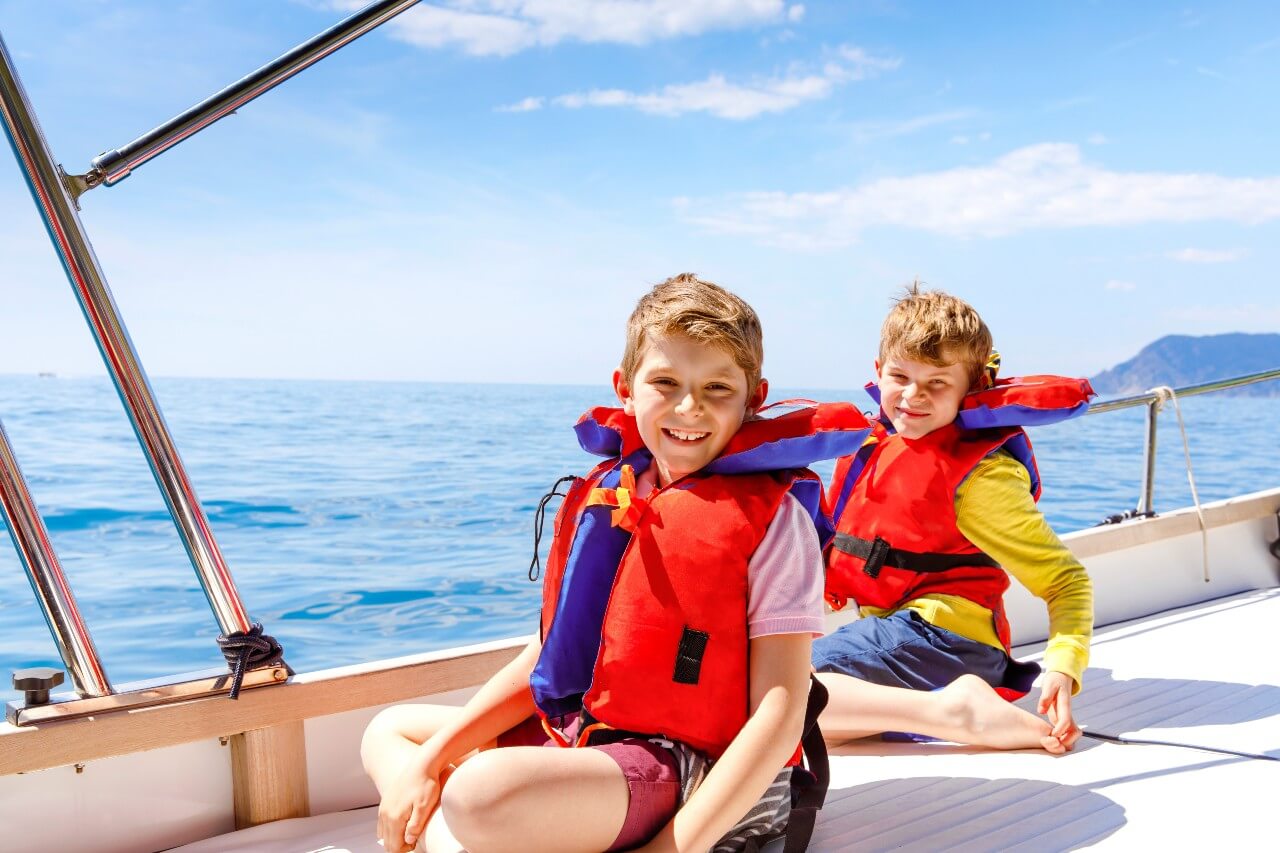
What Safety Equipment is Required on a Boat in Ontario?
Boating is a wonderful activity that provides a unique chance to enjoy the stunning aquatic landscapes Ontario and Canada have to offer. That being said, it can prove dangerous in some situations. The Canadian government has put regulations in place to ensure that pleasure craft operators and their passengers remain as safe as possible on the water. These include regulations regarding the safety equipment required on board.
In this article, find out about the Canadian requirements for boating safety equipment so that you can boat legally and safely in Ontario!
Ontario boating safety equipment requirements
The safety equipment required on a pleasure craft differs depending on the size and type of vessel, but the requirements for each category are consistent across Canada.
Vessels 6 m and under
According to Transport Canada, the following boat safety equipment is required for all motorized and sailing vessels no longer than 6 m.
- One appropriately-sized life jacket or PFD that is approved for use in Canada for each person on board
- A buoyant heaving line (floating rope) that’s at least 15 m long
- A manual propelling device such as a paddle or an anchor with at least 15 m of rope, cable or chain
- A bailer or manual water pump to get water out of the boat
- A sound-signalling device such as a whistle to use in the event of an emergency
- A waterproof flashlight or 3 flares
- Navigation lights if you’re going out during the hours of darkness or in conditions with reduced visibility
- A fire extinguisher if the vessel has an inboard motor, a fixed fuel tank or any fuel-burning appliances
- A reboarding device such as a ladder if the boat rises more than 0.5 m out of the water
- A magnetic compass if the boat is over 8 m long or out of sight of navigation markers
Vessels between 6 and 9 m
Vessels between 6 and 9 m long require all of the equipment listed above, with the following change:
- Both a waterproof flashlight and 6 flares
Vessels between 9 and 12 m
Vessels between 9 and 12 m long require all of the equipment listed above, with the following changes and additions:
- One lifebuoy attached to a buoyant line at least 15 m long
- Both a waterproof flashlight and 12 flares
- An anchor with at least 30 m of rope, cable or chain
Vessels between 12 and 24 m
Vessels between 12 and 24 m long require all of the equipment listed above, with the following changes and additions:
- An anchor with at least 50 m of rope, cable or chain
- Bilge-pumping arrangements rather than a bailer or hand pump
- 2 sound-signalling devices for boats over 20 m
- A fire extinguisher at each entrance to a space containing a fuel-burning appliance, each entrance to an accommodation space, and the entrance to the machinery space
- An axe
- 2 buckets, each with at least a 10 L capacity
Vessels 24 m and over
Vessels 24 m and longer require all of the equipment listed above, with the following changes and additions:
- A buoyant heaving line at least 30 m long
- 2 SOLAS lifebuoys, one attached to a buoyant heaving line at least 30 m long and one equipped with a self-igniting light
- A lifting harness and rigging
- A fire pump outside the machinery space equipped with a hose and nozzle
- 2 axes
- 4 buckets, each with at least a 10 L capacity
For a full list of boating safety equipment requirements and exceptions, consult Transport Canada’s Safe Boating Guide.
Recommended boat safety equipment
In addition to the required boating safety equipment listed above, there is equipment that we strongly recommend having on board at all times in order to be prepared for any eventuality:
- A first-aid kit
- Sunscreen, sunglasses and hats to protect those on board from the sun
- Warm, dry clothing in case the weather changes suddenly
- Snacks and drinking water
- A basic tool kit and spare parts for the motor
- A knife
- Waterproof matches or a lighter
Find out more about boating safety in Ontario
In addition to requiring certain safety equipment aboard a pleasure craft, Canadian law requires the vessel’s operator to have a proper license. Those wishing to operate a boat for recreational purposes must register for a Transport Canada-approved course and pass an exam to obtain their pleasure craft operator card.
The National Boating Safety School is Canada’s leading boating safety course provider. Take the online boat exam today and check out our blog for more useful information!

